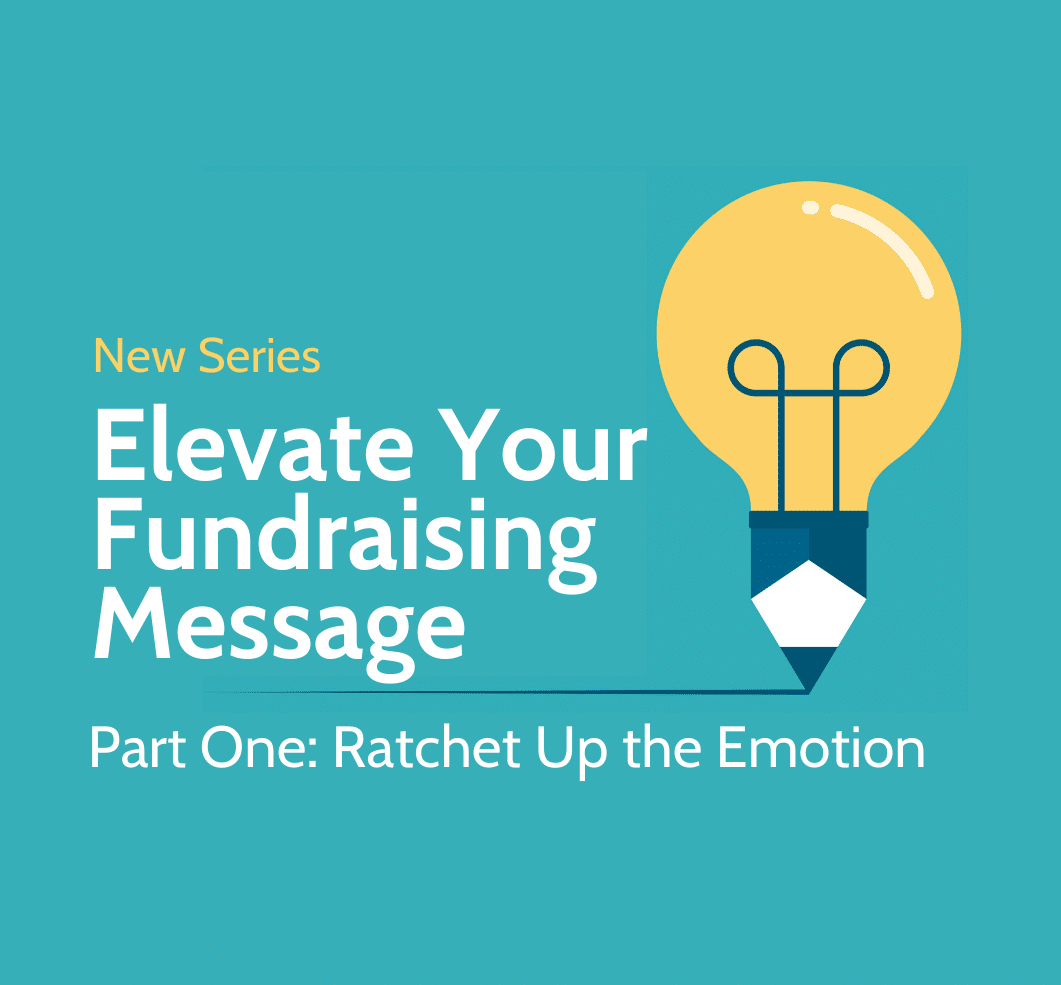Series Note: Recently, I had the opportunity to observe the donor messaging of a small, community nonprofit in the Midwest. I noticed four common issues in their messaging at this nonprofit that plague many others. In this four-part series, I will share four fail-safe strategies for elevating the impact of your donor messaging.
Giving is both an emotional and a cognitive experience. We frequently tell our clients that our brains are the brake pedal, and our hearts are the gas pedal. You can give a donor a wheelbarrow full of facts, statistics, and logic to help them take their foot off the brake but that doesn’t move them forward. Instead, emotional elements that speak to the heart will accelerate your donor’s response.
The greatest tool to develop emotion is story through words, pictures, and video. Stories bring life to your nonprofit or ministry. Rich adjectives and action-oriented verbs paint a picture of the need and impact that speak to the donor’s heart. Helping a donor develop an emotional attachment to your clients not only elevates giving but promotes donor retention.
Here are some questions to ask when crafting a messaging story:
#1 – Who is the main character? Notice, I said character and not characters. Focusing on multiple people in a story dilutes the impact. Yes, the character may be accompanied by parents, children, or siblings, but make it about one person. Generally, the character should be a client, but occasionally it can be a donor or volunteer. The organization should never be the main character in the story.
#2 – What was their life like before your agency helped them? Be careful to share select details that make them more human. For example, notable physical features, favorite foods or activities, dreams or fears.
#3 – What emotions did the main character feel throughout the story? We all have experienced anxiety, joy, hopelessness, love, rejection, and anticipation. Sharing universal emotions helps the donor connect.
#4 – What problem did the main character face and how did your agency help to resolve it? Don’t be afraid to share problems. My wife used to teach high school literature. She would teach her students that through conflict (aka problems) there is interest and movement. Make your story move with a problem that requires resolution.
#5 – What does life look like now that the issue has been resolved? How is it different and better? To learn more about telling nonprofit storytelling, we recommend reading the free storytelling guide by the Myer Foundation titled, Stories Worth Telling . Many nonprofits need to tell more stories to their donors. Others need to bring more life into their stories. Regardless, stories are a powerful way to engage your donor’s heart.
Be sure to check back next week for part two of Brent’s Elevate Your Fundraising Message series. Looking to take your fundraising messaging to the next level? Contact us today to learn how we can help your nonprofit make a lasting impact on donors & take your fundraising to the next level.


